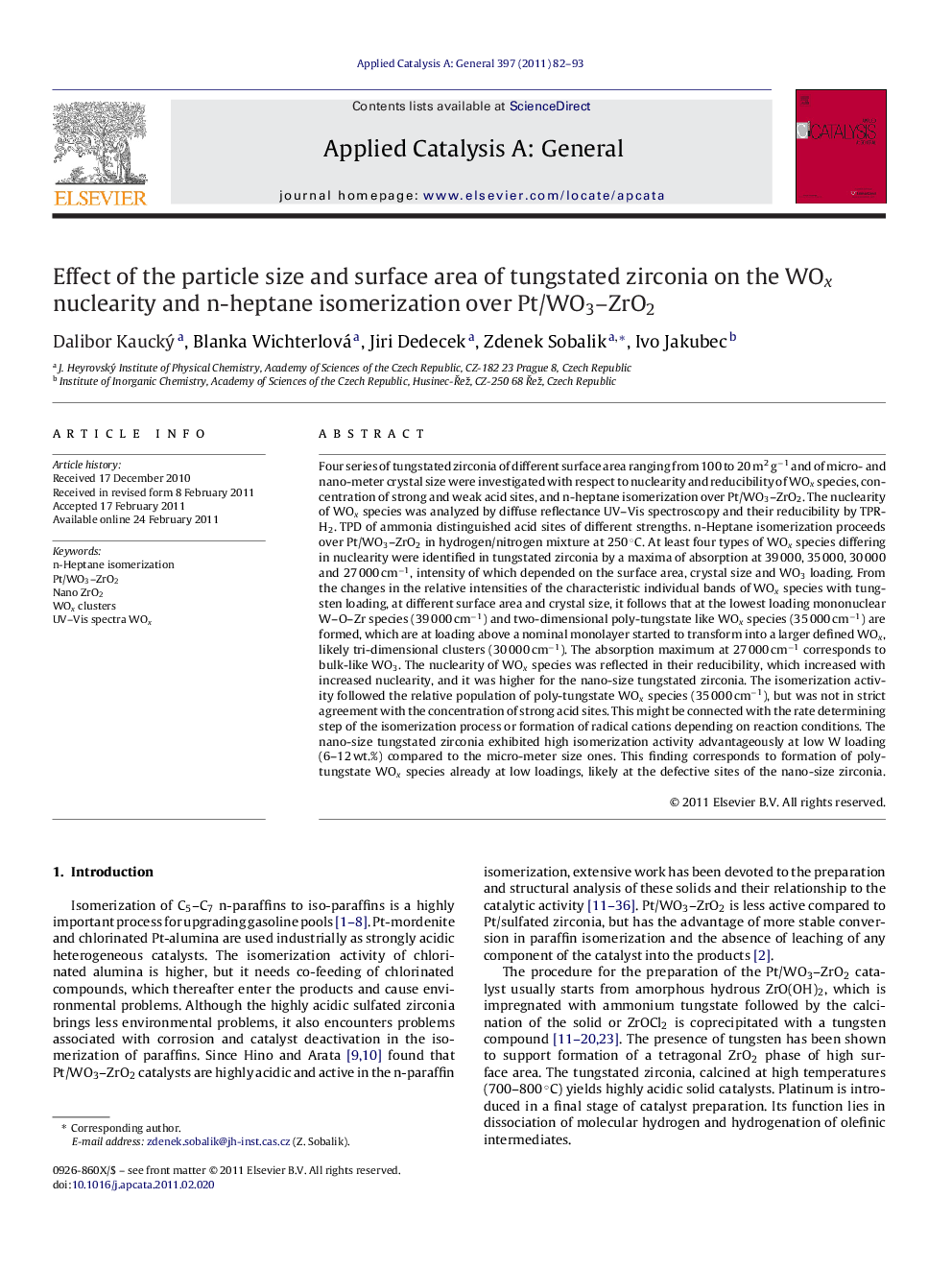| کد مقاله | کد نشریه | سال انتشار | مقاله انگلیسی | نسخه تمام متن |
|---|---|---|---|---|
| 41708 | 45897 | 2011 | 12 صفحه PDF | دانلود رایگان |

Four series of tungstated zirconia of different surface area ranging from 100 to 20 m2 g−1 and of micro- and nano-meter crystal size were investigated with respect to nuclearity and reducibility of WOx species, concentration of strong and weak acid sites, and n-heptane isomerization over Pt/WO3–ZrO2. The nuclearity of WOx species was analyzed by diffuse reflectance UV–Vis spectroscopy and their reducibility by TPR-H2. TPD of ammonia distinguished acid sites of different strengths. n-Heptane isomerization proceeds over Pt/WO3–ZrO2 in hydrogen/nitrogen mixture at 250 °C. At least four types of WOx species differing in nuclearity were identified in tungstated zirconia by a maxima of absorption at 39 000, 35 000, 30 000 and 27 000 cm−1, intensity of which depended on the surface area, crystal size and WO3 loading. From the changes in the relative intensities of the characteristic individual bands of WOx species with tungsten loading, at different surface area and crystal size, it follows that at the lowest loading mononuclear W–O–Zr species (39 000 cm−1) and two-dimensional poly-tungstate like WOx species (35 000 cm−1) are formed, which are at loading above a nominal monolayer started to transform into a larger defined WOx, likely tri-dimensional clusters (30 000 cm−1). The absorption maximum at 27 000 cm−1 corresponds to bulk-like WO3. The nuclearity of WOx species was reflected in their reducibility, which increased with increased nuclearity, and it was higher for the nano-size tungstated zirconia. The isomerization activity followed the relative population of poly-tungstate WOx species (35 000 cm−1), but was not in strict agreement with the concentration of strong acid sites. This might be connected with the rate determining step of the isomerization process or formation of radical cations depending on reaction conditions. The nano-size tungstated zirconia exhibited high isomerization activity advantageously at low W loading (6–12 wt.%) compared to the micro-meter size ones. This finding corresponds to formation of poly-tungstate WOx species already at low loadings, likely at the defective sites of the nano-size zirconia.
Figure optionsDownload high-quality image (220 K)Download as PowerPoint slideHighlights
► The effect of zirconia and WOx nuclearity on n-heptane isomerization was analyzed.
► UV–Vis gave analysis of four types of WOx of different nuclearity on various zirconia.
► The most active are small two dimensional poly-WOx species with 35 000 cm−1 band.
► Nanosize hydrous zirconia yields highly active small poly-WOx at low W content.
Journal: Applied Catalysis A: General - Volume 397, Issues 1–2, 30 April 2011, Pages 82–93